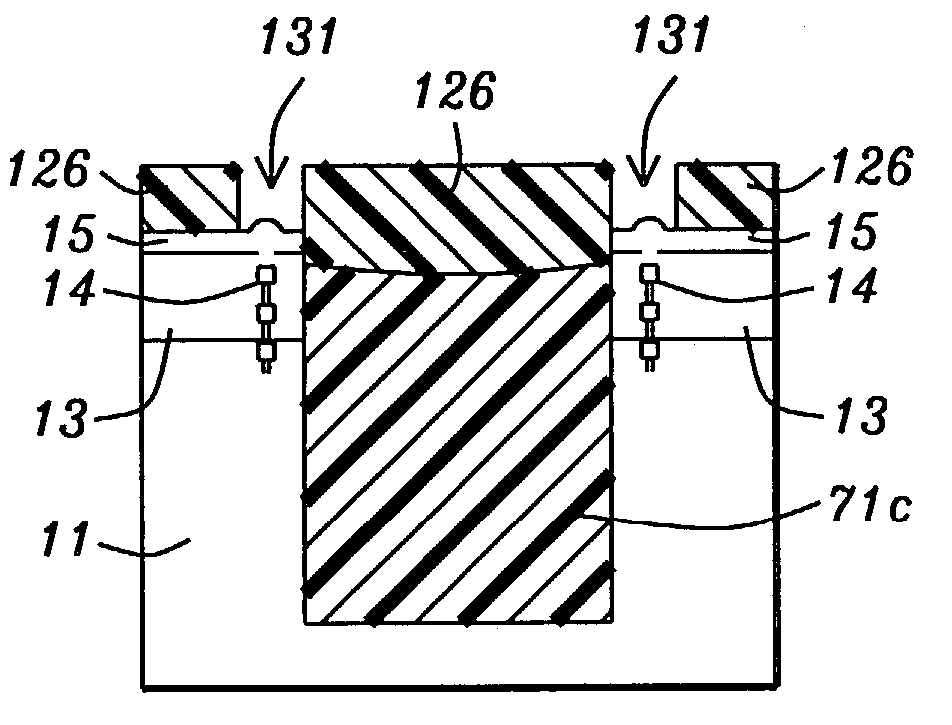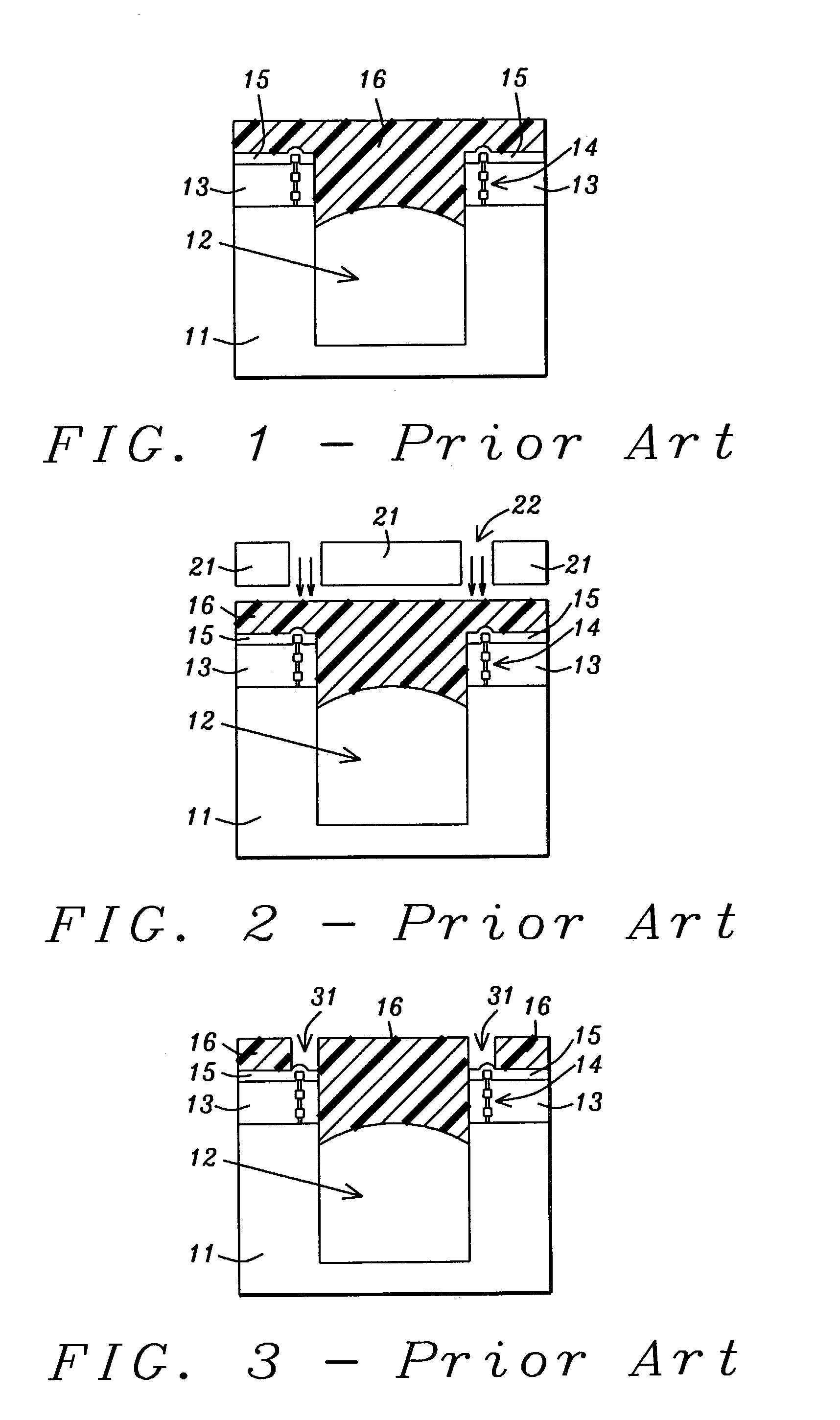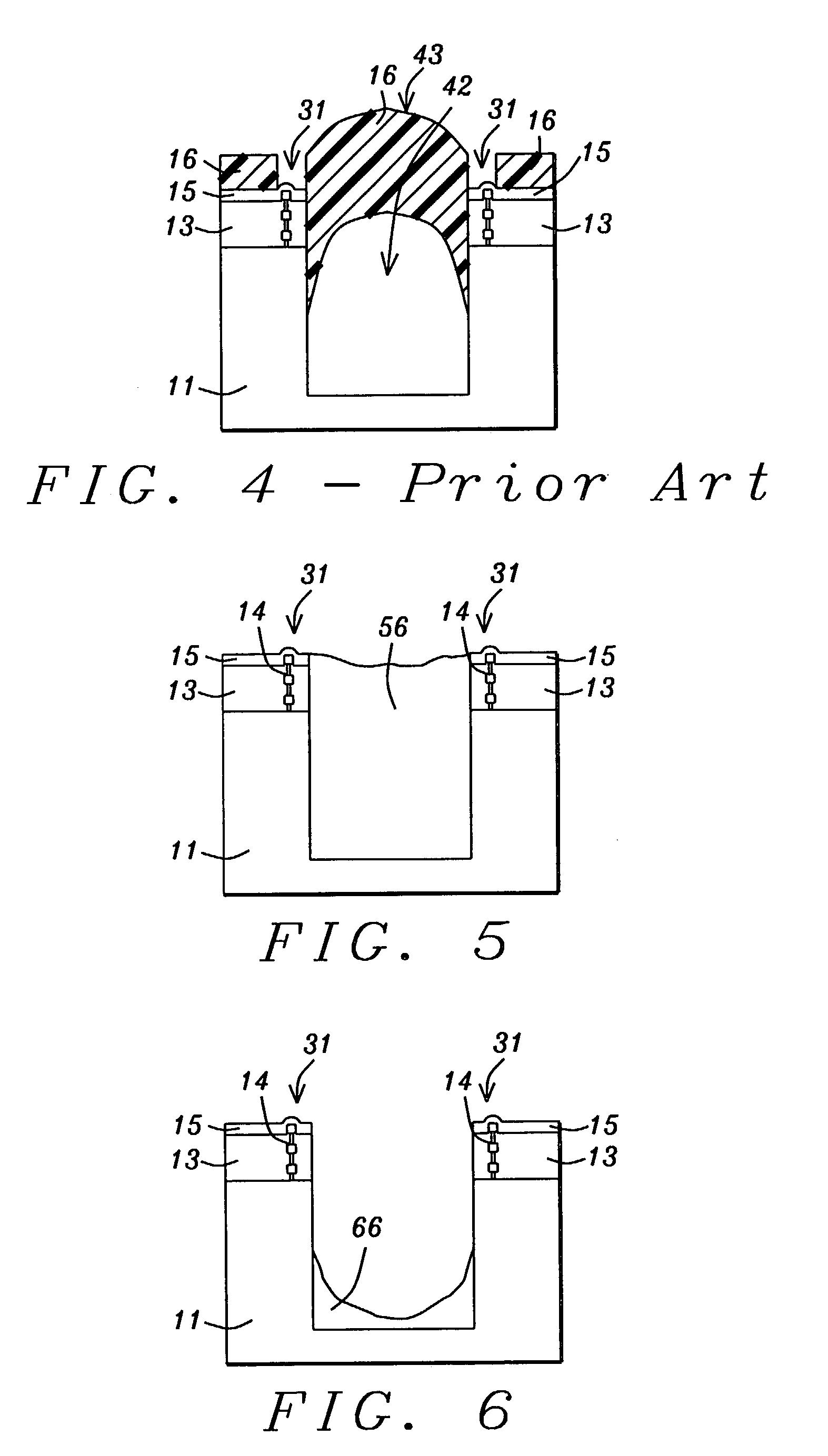Maintaining photoresist planarity at hole edges
- Summary
- Abstract
- Description
- Claims
- Application Information
AI Technical Summary
Benefits of technology
Problems solved by technology
Method used
Image
Examples
Embodiment Construction
[0029]We will describe the invention in terms of photoresist but it should be understood that the invention is more general than this and is applicable to any material that is radiation-sensitive and patternable.
[0030]Referring now to FIG. 5, a first embodiment of the process of the present invention begins with the provision a substrate (base 11 together with layers 13 and 15 in this example) in whose upper surface there is a cavity in the form of a trench, a via hole, or liquid channel. The cavity has a depth between about 15 and 25 microns and a width between about 13 and 18 microns. In a departure from prior art practice, the next step is to fill this cavity with liquid 56 that dissolves photoresist and wets the cavity's floor and sidewalls. Typical examples of such a liquid include (but are not limited to) OK73 Thinner, propylene glycol monomethyl ether 7%, and propylene glycol monomethyl ether acetete.
[0031]Next, most of liquid 56 is removed from within the cavity (preferably ...
PUM
| Property | Measurement | Unit |
|---|---|---|
| Temperature | aaaaa | aaaaa |
| Temperature | aaaaa | aaaaa |
| Temperature | aaaaa | aaaaa |
Abstract
Description
Claims
Application Information
 Login to View More
Login to View More - R&D
- Intellectual Property
- Life Sciences
- Materials
- Tech Scout
- Unparalleled Data Quality
- Higher Quality Content
- 60% Fewer Hallucinations
Browse by: Latest US Patents, China's latest patents, Technical Efficacy Thesaurus, Application Domain, Technology Topic, Popular Technical Reports.
© 2025 PatSnap. All rights reserved.Legal|Privacy policy|Modern Slavery Act Transparency Statement|Sitemap|About US| Contact US: help@patsnap.com



